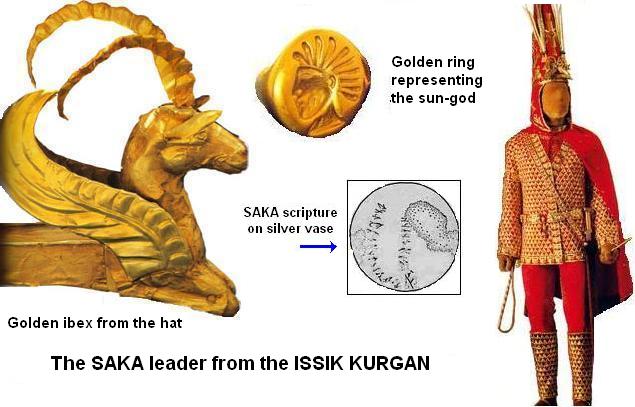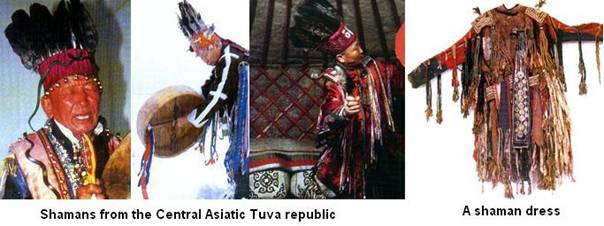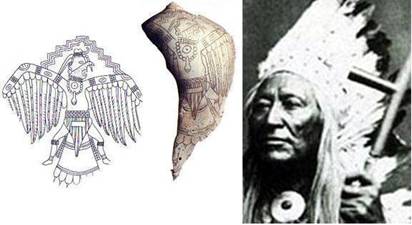|
Central Asia was inhabited by many Saka tribes who
spoke a common language closely related to the Proto-Language
(see Chapter 4, The Asiatic
Scythians). These people of Uighur origin buried
their leaders in specially designed wooden chambers some 8 to
10 ms under the earth. Such a
kurgan was excavated in Kazakhstan, not far from
the city of Almaty. The dig revealed a young man buried in
full clothing decorated with gold plaques and golden
ornaments. On his pointed hat a couple of golden ibexes,
several golden arrows and a golden
Okh
symbol could be seen. He was wearing a golden ring
shown below. A sword and a dagger were in their sheath
decorated with gold. Two silver vases were placed along the
wall of the room, one of which had 26 incised signs, whose
meaning is still debated
(1).

According to Carbon-14 dating
done on the remains, the
Golden Man lived during 5th or 6th
centuries BC. Since the characters of the scripture on the
vase are very similar to the ones belonging to the
Orhun syllabary, shown
in Chapter 21, it is quite logical to try deciphering the
short text with the help of the ancient Turkic language. This
task has been carried out by Kazım Mirşan who deciphered the
scripture as follows (2):
We
request that the ancestors take in the rising soul of this
horned Okh leader.
These words
tell us that the Saka people venerated their ancestors and
considered their leader as an incarnation of the solar deity.
We reach such a conclusion from the figure on his ring, which
is representing the sun, the couple of ibexes as well as the
arrows on his hat. The reason for these symbolic objects being
made out of gold is that gold, with its yellow color has been
the preferred metal of sun-worshiping cultures.
It was
believed by the ancient Asiatic cultures that their ancestors
as well as the sky-god Tengri resided in a mystical or
mythical realm of the sky. This belief is found in many
cultures that spread from Asia (see Chapter 8,
The double-edged ax).
The shaman was responsible for making a mystic contact with
the sky-god and in order to perform a spiritual flight towards
the sky he clad in birdlike clothes and wear a headdress made
out of bird feathers. Pictures of Central Asiatic shamans as
well as a shaman dress can be seen below. The strings and
ropes hanging from the dress represent the feathers of the
bird.

The drum is the main instrument
of the shaman whose vibrating sound helps the shaman to enter
a state of heightened awareness, which is a kind of ecstatic
trance. A shaman is able to perceive spirits and gain special
knowledge of the supernatural realm. Nevill Drury who wrote a
book on Shamanism says (3):
A shaman is ever alert to the intrinsic perils of human
existence, of the magical forces which lie waiting to trap the
unwary, or which give rise to disease, famine or misfortune.
But the shaman also takes the role of an active intermediary
a negotiator in both directions.
Shamanism was the ancient religion of the
Okh people. Their
symbols can still be found on different objects. On the third
picture from the left above we see the Okh symbol which ornate
the cushions on the floor (see Chapter 8).
Asiatic tribes who migrated to North,
Central and South America carried their shamanistic culture
and used it for venturing among spirits and obtaining
information necessary to the benefit of their society. This is
why the leader of the tribe, who is responsible for the future
existence and wellbeing of the tribe, wears a shamanic
headdress made out of bird feathers. Observe the clear
similarity between the dress of the shaman (above) and the
drawing made some 500 years ago by a North-American so called
Indian on the object shown below
(4).
Washakie (1808-1900) the Shoshone tribe leader in his official
attire is on the right.

The circular
object with a dot at its center seen on the breast of both
figures (above) symbolizes the sun. This symbolism uniting the
Okh leader and the
sun has been discussed in several previous chapters. Examples
of the Onkh seals
(below) found in northern, central and southern American
cultures are clear indications of their Asiatic origin.
 |